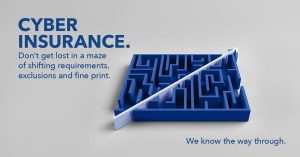Cybersecurity refers to the measures taken to safeguard digital devices, networks, and data from unauthorized access, manipulation, or damage. It is crucial for individuals, businesses, and governments to protect their personal, financial, and national security. However, cybersecurity is not a one-time fix or a stagnant state. It is an ever-changing process that demands continual vigilance and adjustment. This is because cyber threats are constantly developing in complexity, variety, and prevalence. In this article, we will provide comprehensive information on cybersecurity threats and recommend best practices for effectively managing them.
Cybersecurity Threats
Cybersecurity threats refer to any intentional and harmful actions or efforts that seek to undermine the confidentiality, integrity, or accessibility of digital devices, networks, or data. These threats can stem from multiple sources, including hackers, cybercriminals, government-sponsored actors, terrorists, insiders, and natural disasters. The consequences of cybersecurity threats can range from identity theft and data breaches to ransomware attacks, denial-of-service attacks, phishing scams, malware infections, cyber espionage, cyber warfare, and cyber terrorism. Cybersecurity threats can affect anyone, anywhere, and anytime.
Types of Cybersecurity Threats and How They Work
Cybersecurity threats can be classified into different types based on their characteristics, methods, and goals. In this section, we will explain some of the most common types of cybersecurity threats and how they work.
Malware
Malware refers to any type of software or code that is specifically created to cause harm or manipulate a computer, network, or system. It can infiltrate a device through multiple channels, including deceptive emails, harmful downloads, external storage devices, or unaddressed security flaws. Once present, malware can carry out a range of malicious activities such as encrypting data, extracting sensitive information, erasing files, monitoring user activity, and disrupting normal operations. Some common examples of malicious software include:
- Ransomware: a type of malware that restricts access to the victim’s data by locking or encrypting it, and demands payment in exchange for restoring access.
- Spyware: a type of malware that surreptitiously collects information about the victim’s online activities, personal data, or keystrokes.
- Trojan: a type of malware that disguises itself as a legitimate or harmless program, but actually performs harmful actions in the background.
- Worm: a type of malware that is capable of replicating itself and spreading to other devices or networks without any user intervention.
Social Engineering
Social engineering is another form of cyberattack that exploits human psychology and behavior in order to manipulate or deceive victims into taking certain actions or disclosing sensitive information. Social engineering attacks often rely on impersonation, deception, or persuasion to gain the victim’s trust or curiosity. Some examples of social engineering are:
- Phishing: involves sending fraudulent emails or messages that impersonate a credible source, such as a bank or a company, in order to trick the victim into clicking on malicious links, opening attachments, or providing personal information.
- Spoofing, on the other hand, involves creating a false identity or website that mimics a legitimate one (e.g. using a fake caller ID or email address) with the intention of deceiving the victim into thinking they are communicating with someone genuine. Both techniques rely on exploiting human vulnerabilities in order to gain access to sensitive data or carry out malicious activities.
- Baiting: is a form of social engineering where the perpetrator offers an enticing or valuable item, such as a free download, gift card, or job opportunity, in order to lure the victim into compromising their security. This can include actions such as installing malware, visiting a malicious website, or disclosing personal credentials.
Software Supply Chain Attacks
Software supply chain attacks refer to a form of cyberattack that specifically targets the software development or distribution process, as opposed to the end user or final product. Software supply chain attacks aim to compromise or tamper with the software code, tools, or infrastructure that are used to create, test, or deliver software applications or updates. Some examples of software supply chain attacks are:
- Compromise of software build tools or dev/test infrastructure: a type of software supply chain attack that involves hacking or infecting the tools or systems that are used to compile, test, or deploy software code. The goal of this attack is to inject malicious code or backdoors into the software products or updates that are produced by these tools or systems.
- Compromise of devices or accounts owned by privileged third-party vendors: a type of software supply chain attack that involves hacking or compromising the devices or accounts of third-party vendors that have access to the software code or systems of the target organization. The goal of this attack is to use the vendor’s credentials or devices to access, modify, or steal the software code or data of the target organization.
- Code signing abuse: a type of software supply chain attack that involves using stolen or forged code signing certificates or developer IDs to sign malicious applications or updates. The goal of this attack is to bypass the security checks or warnings that are based on the digital signature of the software.
Cybersecurity Best Practices and How to Implement Them
Cybersecurity threats are not only increasing in number and complexity, but also in impact and severity. Therefore, it is vital for organizations and individuals to adopt and follow cybersecurity best practices to protect their data, systems, and networks from cyberattacks. Cybersecurity best practices refer to a set of strategies, policies, tactics, and actions that are widely recognized as the most effective means for organizations to protect themselves against cyber threats and maintain a strong security posture. Cybersecurity best practices can vary depending on the type, size, and nature of the organization, as well as the specific threats and risks it faces. However, some common cybersecurity best practices that apply to most organizations and individuals are:
Implement a Robust Cybersecurity Strategy
A cybersecurity strategy is a plan that outlines the goals, objectives, and actions for achieving and maintaining a secure and resilient cyber environment. A cybersecurity strategy should be aligned with the organization’s mission, vision, and values, as well as the legal and regulatory requirements. It is important to regularly review and update a cybersecurity strategy in order to stay current with evolving threats and adapt to the changing needs of the business.
Use Strong and Varied Passwords
Passwords serve as the initial barrier against unauthorized entry into devices, accounts, and data. It is crucial that passwords are lengthy, intricate, and distinctive, requiring a mix of uppercase and lowercase letters, numbers, and symbols. Additionally, it is essential to avoid using the same password for multiple platforms or services. Passwords should also be changed periodically and stored securely, preferably using a password manager tool.
Set up Two-Factor or Multi-Factor Authentication (MFA)
Multi-factor authentication (MFA) is a security measure that requires users to validate their identity by providing two or more forms of evidence before accessing a device, account, or service. This additional layer of security goes beyond passwords and can greatly decrease the chances of an account being compromised. MFA utilizes various factors, such as knowledge-based (e.g. password or PIN), possession-based (e.g. smartphone or token), or biometric-based (e.g. fingerprint or facial scan) authentication methods.
Update Your Software and Hardware
Keeping software and hardware up-to-date is crucial in addressing bugs, enhancing performance, and strengthening security. These updates frequently include patches or solutions for identified weaknesses that could potentially be exploited by malicious actors to gain unauthorized access to devices, systems, or data. Therefore, it is important to keep all software and hardware up to date, including operating systems, applications, browsers, plugins, firmware, and drivers.
Think Before You Click
Phishing and social engineering are among the most common and effective cyberattack techniques, as they rely on human error or curiosity to trick users into clicking on malicious links, opening malicious attachments, or providing sensitive information. Therefore, it is important to think before you click on any email, message, or website that looks suspicious, unexpected, or too good to be true. It is recommended that users thoroughly review the sender, subject, content, and URL of any communication they receive and refrain from clicking on suspicious or unfamiliar links.
Use a Firewall and Antivirus Software
A firewall is a security system, either in the form of software or hardware, that oversees and regulates network traffic entering and leaving a device. It operates according to pre-established guidelines. By doing so, a firewall can prevent unauthorized or harmful connections to and from a device or network. Antivirus software is a program designed to identify and eliminate malicious software from a device or system. It serves as a defense mechanism against viruses, worms, trojans, ransomware, spyware, and other forms of malware, safeguarding devices and data.
Encrypt Your Data and Communications
Encryption is a procedure that converts data or information into an indecipherable form using a secret key or algorithm. Its purpose is to safeguard data and communications from unauthorized access, alteration, or disclosure. Encryption can be applied to data at rest (e.g., on a hard drive or a cloud storage) or data in transit (e.g., on a network or a website). Encryption can also be used to secure email, messaging, voice, or video communications.
Backup Your Data
Backup is a process that creates a copy or a duplicate of data or information and stores it in a separate location or device. Backup can help protect data from loss, corruption, or damage, due to cyberattacks, natural disasters, human errors, or hardware failures. Backup can also help restore data or information in case of a ransomware attack, where the original data is encrypted or locked by the attacker. Backup should be performed regularly and frequently, and the backup data should be verified and tested.
Educate Yourself and Your Employees
Cybersecurity awareness and education are crucial for preventing and mitigating cyberattacks, as human factors are often the weakest link in the security chain. Users should be aware of the common cyber threats and risks, as well as the best practices and behaviors for staying safe online. Users should also be trained on how to recognize and report suspicious or malicious activities, such as phishing emails, spoofed websites, or unauthorized access attempts. Cybersecurity awareness and education should be ongoing and updated, as cyber threats and technologies evolve.
Intuition Consultancies: Your Trusted Cybersecurity Partner
If you are looking for a reliable and cost-effective partner to help you enhance your cybersecurity, you may want to consider Intuition Consultancies. Intuition Consultancies is a reputable company offering specialized cybersecurity services aimed at assisting clients in effectively securing their infrastructure and implementing comprehensive security and compliance measures.
Bottom Line
By providing a combination of cyber protection solutions, training, internal controls, and advanced technology, Intuition Consultancies enables small and medium-sized businesses to operate with increased assurance. Intuition Consultancies also offers cybersecurity monitoring, dark web monitoring, AI-based email security, and SOC management. To learn more about Intuition Consultancies and their cybersecurity services, you can visit their website or contact them.






